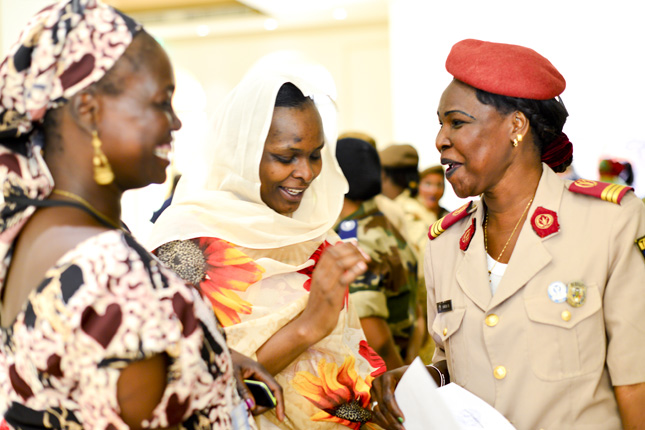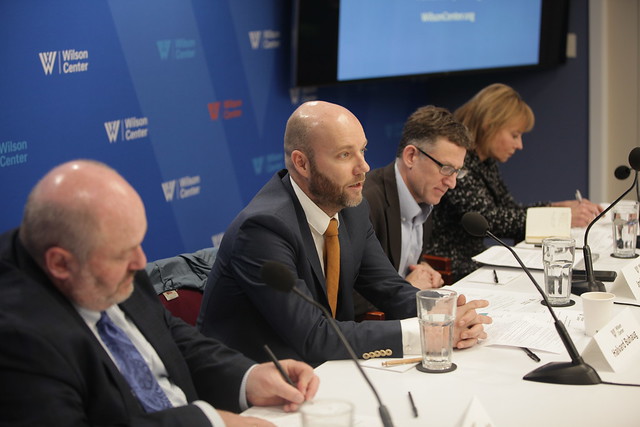-
Climate Change and Conflict: New Research for Defense, Diplomacy, and Development
March 26, 2018 By Ellie Anderson
“Climate is unquestionably linked to armed conflict,” said Halvard Buhaug, a professor at the Peace Research Institute Oslo and the Norwegian University of Science and Technology, at a recent Wilson Center event marking the end of the three-year Climate Anomalies and Violent Environments (CAVE) research project. But, he stresses that under a changing climate, exactly how and through what pathways is still a subject of much debate in the academic community.
At the same time, practitioners working in fragile states need concrete guidance in order to prevent conflict and improve adaptation. “Conflict is an important cause of vulnerability to climatic changes,” said Buhaug. “Conflict mitigation…is probably the most important thing we can do to reduce environmental vulnerability.”
Climate Linked to Conflict Through Multiple Pathways
Climatic changes can increase the risk of conflict under certain conditions and through certain causal pathways, said Buhaug, citing some common drivers: a history of violence, low levels of development, poor governance, and inequality. In addition, the evidence shows that “climatic changes can affect the dynamics of conflict,” including the conflict’s duration, severity, and likelihood of ending quickly. But there is much less consensus that such changes could cause an outbreak of armed conflict.
To understand climate’s impact on conflict dynamics and identify strategic entry points for intervention, we should study the indirect causal pathways linking climate change and violence, including: agriculture and food prices, economics, migration, disasters, and institutions, said Joshua Busby, associate professor of public affairs at the University of Texas, Austin. For example, if climate impacts depress economic growth or agricultural prices, it could lower the opportunity costs of violence. Migrants may conflict with residents in receiving areas, but the vulnerability of environmental migrants may make them less like to engage in violence.
Overall, we need more case studies representing a broader spectrum of societies and situations, said Busby. As Marc Levy wrote in 1995, we should “compare societies facing similar environmental problems, but exhibiting different levels of violent conflict” to identify “the conditions under which environmental degradation generates violent conflict and when it does not.”
“Focusing only on cases that include conflict doesn’t make for good generalizations,” said Buhaug, urging researchers to study “societies that regularly experience extreme weather events…where we do not observe a violent outcome.”
Development Is Key to Long-Term Stability—and Stability Is Key to Climate Adaptation
“Armed conflict effectively is development in reverse. It’s a major barrier to economic growth,” said Buhaug. Development, on the other hand, is the “key for long-term stability and sustained peace,” he said, especially aid for marginalized and vulnerable communities. “In order to strengthen adaptive capacity, which could reduce conflicts, we need to address instability on the ground, and resolve ongoing conflict,” said Buhaug.
“Armed conflict effectively is development in reverse”We put most of our resources into humanitarian response, and not enough into diplomacy and development, said Busby. For example, “if there were more resources to support transboundary water institutions and domestic water management, that would be a good investment, and support peacebuilding along the way,” he said.
We must listen to the concerns of the most vulnerable people, said Busby. “Women in particular are often excluded from participation, and so they’re going to bear disproportionate impact,” he said. In addition, excluding women also limits the success of peacebuilding: research shows that peace treaties are more successful when women are involved in negotiations, said Sherri Goodman, senior fellow at the Wilson Center, and former deputy under secretary of defense (environmental security).
National Security Needs to Assess, Predict, and Manage Climate Risks
“If climate changes, and changes in the Tibetan plateau, combined with Chinese hydro, mean that Cambodia gets one rice harvest instead of two, then that’s important to us from a security perspective,” said Geoffrey Dabelko, associate dean and director of the environmental studies program at Ohio University.
To assess and manage climate-related risks to national security, we must link practitioners with scholars and researchers, said Sherri Goodman, Wilson Center Senior fellow and former U.S. Deputy Under Secretary of Defense (Environmental Security). As the founder of the CNA Military Advisory Board, Goodman convened physical scientists to help defense analysts and military leaders understand climate change and its effects on security.
Mapping hotspots can help identify places that are likely to be a security concern, said Busby. But a hotspot model doesn’t “necessarily tell you when or what are the specific triggers that might lead to…security outcomes, nor does it tell you exactly what to do,” he said.
Early warning systems can help us anticipate shocks in advance, allowing people to prepare and respond. “That preparation piece has to be thoughtful and mindful about creating new problems because if you prepare in a way that creates sources of conflict because people at a local level don’t feel like they have a stake…you’re gonna make the situation worse,” said Busby.
Predictive capability is improving, but there are still major gaps. “The national security community wants to be able to rely on observed changes…and reasonably reliable predictions,” said Goodman. “We have a responsibility to prepare.”
Sources: International Organization, International Security, PRIO, World Bank
Photo Credit: Women’s Leadership Forum, courtesy of USAFRICOM, March 2017, courtesy of USAFRICOM.
 A Publication of the Stimson Center.
A Publication of the Stimson Center.




